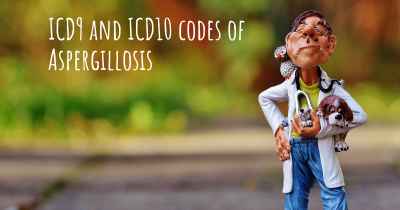Can people with Aspergillosis work? What kind of work can they perform?
See how people with experience in Aspergillosis give their opinion about whether people with Aspergillosis can work and what kind of jobs are more appropriated for people with Aspergillosis

Can people with Aspergillosis work?
Aspergillosis is a fungal infection caused by the Aspergillus fungus. It primarily affects the respiratory system, but it can also spread to other parts of the body. The impact of Aspergillosis on an individual's ability to work depends on various factors, including the severity of the infection, the specific symptoms experienced, and the type of work involved.
For individuals with mild or well-managed cases of Aspergillosis, it is often possible to continue working without significant limitations. With appropriate treatment and management, many people with Aspergillosis are able to lead productive lives and maintain employment.
What kind of work can they perform?
The type of work individuals with Aspergillosis can perform depends on several factors:
- Symptom severity: If the symptoms of Aspergillosis are mild and well-controlled, individuals may be able to perform a wide range of jobs without any significant limitations. However, if the symptoms are more severe or if complications arise, certain physical or strenuous occupations may need to be avoided.
- Respiratory involvement: Aspergillosis primarily affects the respiratory system, so individuals with significant respiratory symptoms may need to avoid jobs that involve exposure to airborne irritants, dust, or mold. This is particularly important for occupations such as construction, farming, or working in environments with poor air quality.
- Immunocompromised individuals: Some individuals with Aspergillosis may have weakened immune systems due to underlying conditions or medications. In such cases, it is crucial to consider the individual's overall health and susceptibility to infections when determining suitable work options.
- Individual limitations: Aspergillosis can cause fatigue, shortness of breath, and other symptoms that may impact an individual's ability to perform physically demanding tasks. It is important to assess the individual's specific limitations and consider jobs that align with their abilities and limitations.
Ultimately, the ability to work with Aspergillosis varies from person to person. It is essential for individuals with Aspergillosis to consult with their healthcare providers to determine the most appropriate work options based on their specific condition and limitations. Employers should also be informed about any necessary accommodations or modifications that may be required to ensure a safe and healthy work environment.
Posted Sep 11, 2017 by Michele 2656
Posted Oct 18, 2017 by Vaughan 2500
Posted Oct 18, 2017 by Mandy 1200
Posted Oct 21, 2017 by Boni 1450
Posted Nov 7, 2017 by Louby 1400
Posted Nov 9, 2017 by Sam 2500
Posted Aug 14, 2018 by StuartMcKelvie 4050
Posted Aug 8, 2019 by Patricia Fletcher 2500
All forms are prone to periods of time when the symptoms worsen quite dramatically for several weeks.
Posted Oct 16, 2019 by GAtherton 3100
Posted Oct 17, 2019 by Linda Galbraith 2500
The types of diseases caused by Aspergillus are varied, ranging from an allergy-type illness to life-threatening generalised infections. Diseases caused by Aspergillus are called aspergillosis. The severity of aspergillosis is determined by various factors but one of the most important is the state of the immune system of the person.
Allergic bronchopulmonary aspergillosis (ABPA) and “fungal asthma” (SAFS)
This is a condition which produces an allergy to the spores of the Aspergillus moulds. It is quite common in asthmatics; up to 2.5% of adult asthmatics might get this at some time during their lives. ABPA is also common in cystic fibrosis patients, as they reach adolescence and adulthood. The symptoms are similar to those of asthma: intermittent episodes of feeling unwell, coughing and wheezing. Some patients cough up brown-coloured plugs of mucus. The diagnosis can be made by X-ray or by sputum, skin and blood tests. In the long term ABPA can lead to permanent lung damage (fibrosis or bronchiectasis) if untreated.
The treatment is with steroids by aerosol or mouth (prednisolone), especially during attacks. Itraconazole (an oral antifungal drug) is useful in reducing the amount of steroids required in those needing medium or high doses. This is beneficial as steroids have side-effects like thinning of the bones (osteoporosis) and skin and weight gain, especially when used for a long time. It is not known whether patients with ABPA not on steroids (or on low doses) benefit in some way.
Some patients with severe asthma (i.e. requiring oral or high dose inhaled steroids) are sensitised to Aspergillus and/pr other fungi, but do not have ABPA. This condition is called SAFS but is sometimes known as “fungal asthma”. Oral itraconazole helps many patients with SAFS by improving asthma control. Itraconazole sl ows the body’s clearance of inhaled steroids in 50% of patients, so steroid side-effects may be magnified. The dose of inhaled steroids should be reduced, if possible.
Aspergilloma and chronic pulmonary aspergillosis
This is a very different disease also caused by the Aspergillus mould. The fungus grows within a cavity of the lung, which was previously damaged during an illness such as tuberculosis or sarcoidosis. Any lung disease, which causes cavities, can leave a person open to developing an aspergilloma. The spores penetrate the cavity and germinate, forming a fungal ball within the cavity. In some people, cavities in the lung are formed by Aspergillus, and no fungal ball is present. The fungus secretes toxic and allergic products, which may make the person feel ill.
The person affected may have no symptoms (especially early on). Weight loss, chronic cough, feeling rundown and tired are common symptoms later. Coughing of blood (haemoptysis) can occur in up to 50-80% of affected people.
The diagnosis is made by X-rays, scans of lungs and blood tests, especially “Aspergillus precipitins”.
Treatment depends on many factors including whether the patient is coughing and how much lung disease there is. Those with a single aspergilloma in one cavity should have it removed if feasible, especially if the patient is coughing blood. Those with no symptoms may need no treatment. Oral itraconazole (usually 400 mg daily) helps symptoms in many patients but rarely kills the fungus in the cavity. A new alternative is voriconazole, which is at least as effective as itraconazole. Surgery is difficult however, and therefore is best reserved for single lung cavities. Sometimes other antifungal drugs ( especially amphotericin B) can be injected directly into the cavity by a tube, which is put into position under local anaesthesia. Voriconazole and posaconazole are useful alternatives.
Aspergillus bronchitis
Some people with bronchiectasis (enlarged airways) get low grade airway infection with Aspergillus. This appears to be particularly common in cystic fibrosis and associated with reduced lung function. In those without CF, either recurrent chest infections that don’t clear properly with antibiotics or production of very thick sputum, blocking breathing is common. Sometimes bacterial and Aspergillus infections occur together. Sputum growing Aspergillus (or detection by other more sensitive tests) is critical for the diagnosis. Antifungal therapy is usually helpful.
Aspergillus sinusitis
Aspergillus disease can happen in the sinuses leading to Aspergillus sinusitis. Just as in the lungs, Aspergillus can cause the three diseases - allergic sinusitis, a fungal ball or invasive aspergillosis.
Allergic disease is as sociated with long standing symptoms of a runny blocked up nose, and may lead to nasal polyps. Surgical drainage, including removal of polyps, careful attention to treatment of bacterial infection, local steroids and/or short courses of oral steroids and antifungals applied locally are the approaches to therapy.
The fungal ball caused by Aspergillus happens in a similar way to an aspergilloma. In those with normal immune systems, stuffiness of the nose, chronic headache or discomfort in the face is common. Drainage of the sinus, by surgery, usually cures the problem, unless the Aspergillus has entered the sinuses deep inside the skull. Then antifungal drugs and surgery together is usually successful.
When patients have damaged immune systems - if, for example they have had leukaemia or have had a bone marrow transplant - Aspergillus sinusitis is more serious. In these cases the sinusitis is a form of invasive aspergillosis. The symptoms include fever, facial pain, nasal discharge and headaches. The diagnosis is made by finding the fungus in fluid or tissue from the sinuses and with scans. Surgery is done in most cases, as it is important to find out what is exactly wrong and is often helpful in eradicating the fungus. Treatment with powerful antifungal medicines is essential. Choices of treatment include amphotericin B, caspofungin, voriconazole or itraconazole. Response may be better to amphotericin B than voriconazole or itraconazole; the role of caspofungin is uncertain, as there is little experience.
Invasive aspergillosis
Some people with damaged or impaired immune systems die from invasive aspergillosis. Their chances of living are improved the earlier the diagnosis is made but unfortunately there is no good single diagnostic test. Often treatment has to be started when the condition is only suspected.
This condition is usually clinically diagnosed in a person with low defences such as bone marrow transplant, low white cells after cancer treatment, AIDS or major burns. There is also a rare inherited condition that gives people low immunity (chronic granulomatous disease ), which puts affected people at moderate risk. People with invasive aspergillosis usually have a fever and symptoms from the lungs (cough, chest pain or discomfort or breathlessness) , which do not respond to standard antibiotics. X-rays and scans are usually abnormal and help to localise the disease. Bronchoscopy (inspection of the inside of the lung with a small tube inserted via the nose) is often used to help to confirm the diagnosis. Cultures and blood tests (especially antigen detection) are usually necessary to confirm the disease.
In people with particularly poor immune systems, the fungus can transfer from the lung through the blood stream to the brain or to other organs, including the eye, the heart, the kidneys and the skin. Usually this is a bad sign as the condition is more severe and the person sicker with a higher risk of death. However, sometimes infection of the skin enables the diagnosis to be made earlier and treatment to be started sooner.
Treatment is with antifungal drugs such as voriconazole, caspofungin, micafungin, itraconazole or amphotericin B, posaconazole or itraconazole. Voriconazole is usually better than amphotericin B. Some other drugs used for the treatment of tuberculosis or epilepsy reduce the blood levels of voriconazole. Voriconazole can be given orally or intravenously. It is better than amphotericin B, but may require dose modification to maximise success, especially in children, those with liver disease or cirrhosis and possibly the elderly.
Caspofungin and micafungin can only be given intravenously, and are also partially effective, especially in those with normal white cell counts. It has been used as rescue therapy and in combination with other antifungals, with reasonable success.
Amphotericin B has to be given by vein in large doses. In some patients the treatment can damage the kidney and other organs. Newer forms of amphotericin B (Amphotec or Amphocil, Abelcet or AmBisome ) are useful, especially when the patient experiences side-effects, as they usually cause fewer side effects, especially less renal dysfunction.
Posaconazole is a new potent oral antifungal drug given as a liquid that is useful for preventing aspergillosis and in treatment.
Itraconazole is generally given orally , although an intravenous preparation is available now. Itraconazole is often used for follow on therapy after intravenous treatment or to prevent infection. Resistance to itraconazole is more frequent since 2004.
Azole antifungal drugs have many drug interactions. We have compiled a listing of these here for you to check. Antifungal Interactions database
The earlier treatment is started the better the chances of survival. In patients with low numbers of white cells (infection fighters), recovery of these cells can be important in stopping the growth of the fungus. Sometimes surgery is also required. Overall, more than half of patients survive invasive aspergillosis if treated and none survive if they are not treated.
All these conditions can affect children and should be diagnosed and treated in the same way.
Transmission between people
Aspergillus is not communicable or transmissible between people, and so isolation is not required.
A lot of encouraging research is being done at the moment to speed up diagnosis of this invasive aspergillosis and to improve its treatment. More detailed descriptions of the diseases, diagnostic methods and treatments can be found at
Posted Oct 18, 2019 by Mubashar Iqbal 800
I exercise - yoga and walking.
Posted Oct 19, 2019 by Pam Mars 2500
Avoid gardening job
Posted Feb 14, 2020 by Peta 3110
Posted Feb 15, 2020 by Dayna 1700
Posted Aug 25, 2020 by Coco2020 1000
Posted Apr 10, 2022 by patriottrader 1500








